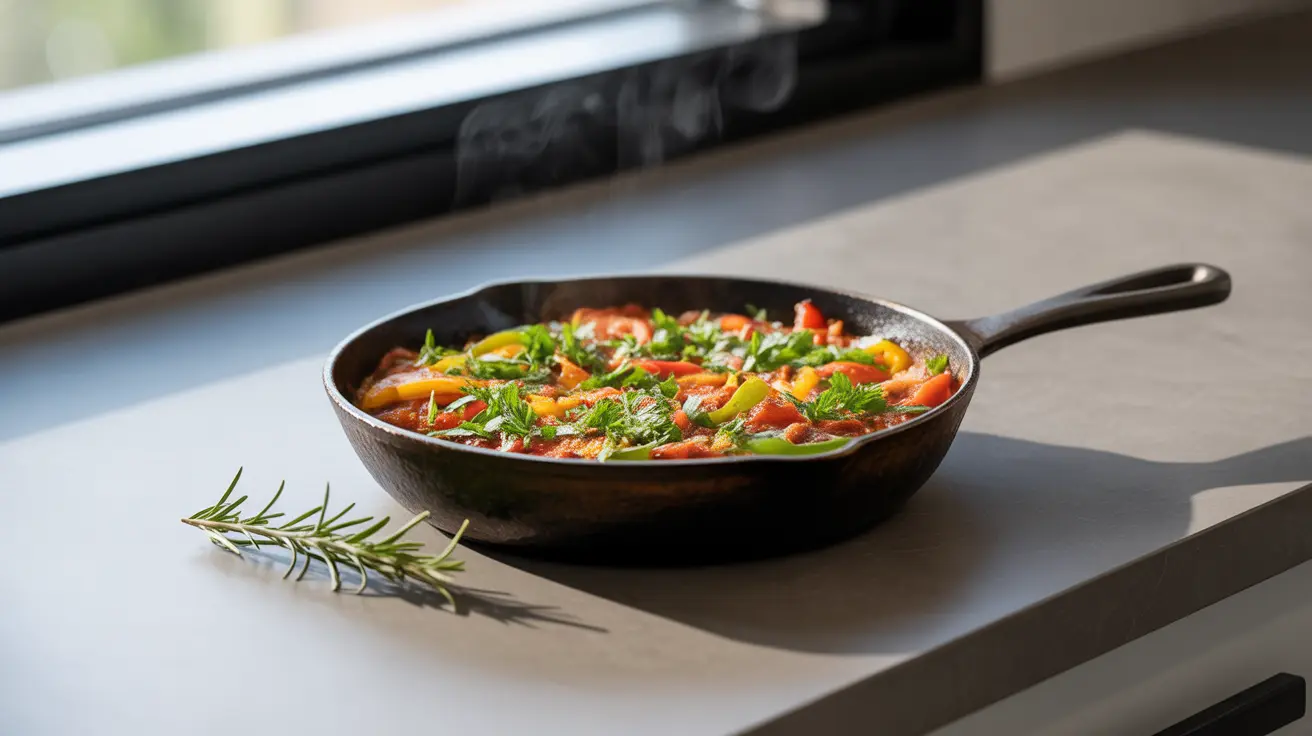Cast iron cookware has been a kitchen staple for generations, and for good reason. Beyond its exceptional durability and versatility, cooking with cast iron offers numerous health benefits that modern cookware simply can't match. From naturally increasing your dietary iron intake to providing a chemical-free cooking surface, cast iron pans are making a strong comeback in health-conscious kitchens.
In this comprehensive guide, we'll explore the remarkable health advantages of cast iron cooking and how to make the most of this time-tested cookware in your daily meal preparation.
Understanding Iron Transfer in Cast Iron Cooking
When you cook with cast iron, a small amount of iron naturally transfers into your food. This process, known as iron leaching, is particularly beneficial because the iron becomes part of your meal in a form that your body can readily absorb. The amount of iron transferred depends on several factors, including the acidity of the food, cooking time, and moisture content.
Factors Affecting Iron Transfer
Several key elements influence how much iron is transferred to your food:
- Cooking time and temperature
- Food acidity levels
- Moisture content of the food
- Seasoning level of the pan
- Type of food being prepared
Health Advantages Over Modern Cookware
Cast iron cookware offers significant benefits compared to modern non-stick alternatives:
- Chemical-free cooking surface
- Natural non-stick properties when properly seasoned
- Superior heat retention and distribution
- Increased dietary iron content
- Exceptional durability and longevity
Foods That Benefit Most from Cast Iron Cooking
Certain foods are particularly well-suited for cast iron cooking and receive the most significant iron enrichment:
- Acidic foods like tomato-based sauces
- Leafy greens such as spinach
- Eggs and meat dishes
- Cornbread and other baked goods
- Stir-fried vegetables
Proper Care and Maintenance
Maintaining your cast iron cookware properly is essential for both its longevity and optimal health benefits:
To keep your pan in prime condition:
- Clean while still warm
- Avoid soap when possible
- Dry thoroughly after washing
- Apply a thin layer of cooking oil after each use
- Store in a dry place
Supporting Iron Deficiency Management
While cooking with cast iron can contribute to your daily iron intake, it's important to understand its role in managing iron deficiency. Regular use of cast iron cookware can be a helpful dietary supplement, but should not be considered a complete replacement for medical treatment of iron deficiency anemia.
Frequently Asked Questions
How does cooking with cast iron increase the iron content of my food?
When food comes in contact with cast iron, especially during cooking, small amounts of iron naturally transfer from the pan into the food. This process is enhanced with acidic foods and longer cooking times, providing a natural way to increase dietary iron intake.
What are the main health benefits of using cast iron cookware compared to nonstick pans?
Cast iron cookware provides chemical-free cooking, natural iron enrichment, and superior heat distribution. Unlike non-stick pans, cast iron doesn't release synthetic chemicals, is more durable, and actually improves with use over time.
Which types of foods absorb the most iron when cooked in cast iron?
Acidic foods like tomato-based sauces, moisture-rich vegetables, and foods cooked for longer periods tend to absorb the most iron. Leafy greens and proteins also benefit significantly from cast iron cooking.
How should I care for and maintain my cast iron pans to keep them durable and nonstick?
Regular seasoning, proper cleaning without soap, thorough drying, and applying a light coat of oil after each use are essential maintenance steps. Always store the pan in a dry place and avoid cooking highly acidic foods in an unseasoned pan.
Can cooking in cast iron help with iron deficiency anemia or is supplementation still needed?
While cooking with cast iron can contribute to dietary iron intake, it should not be relied upon as the sole treatment for iron deficiency anemia. Consult with a healthcare provider for proper medical treatment and supplementation if you have iron deficiency anemia.




